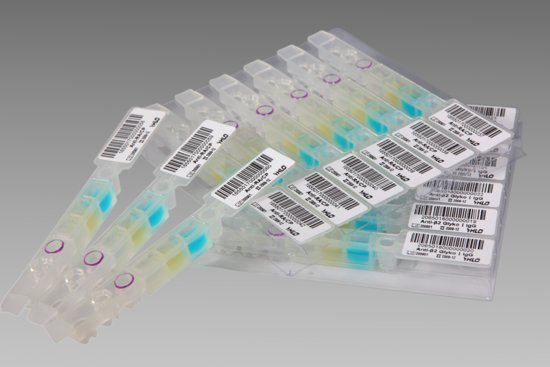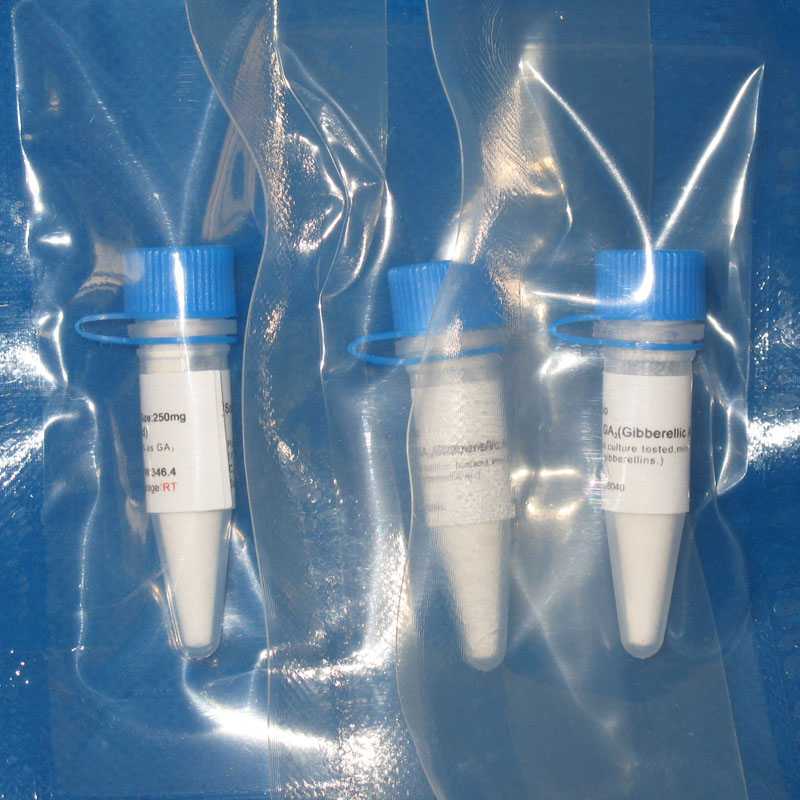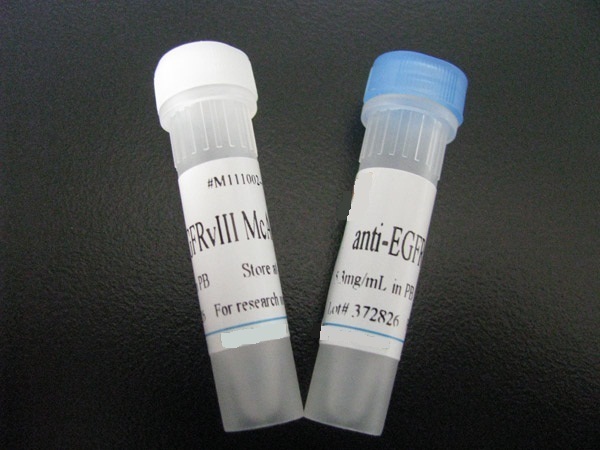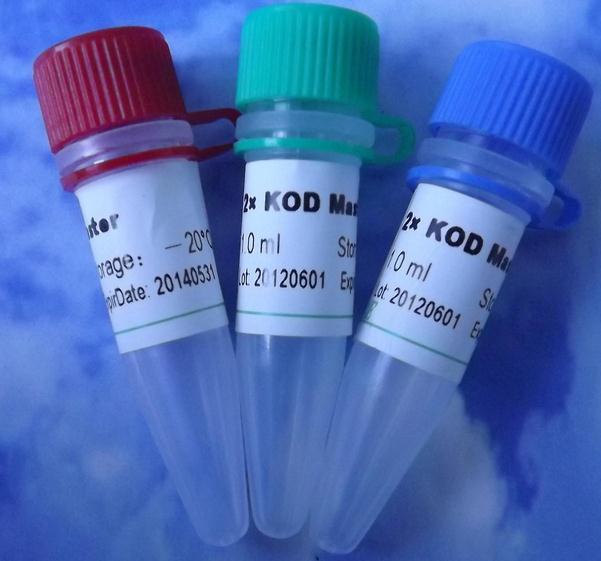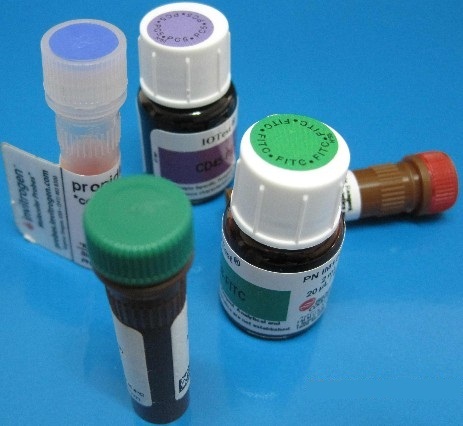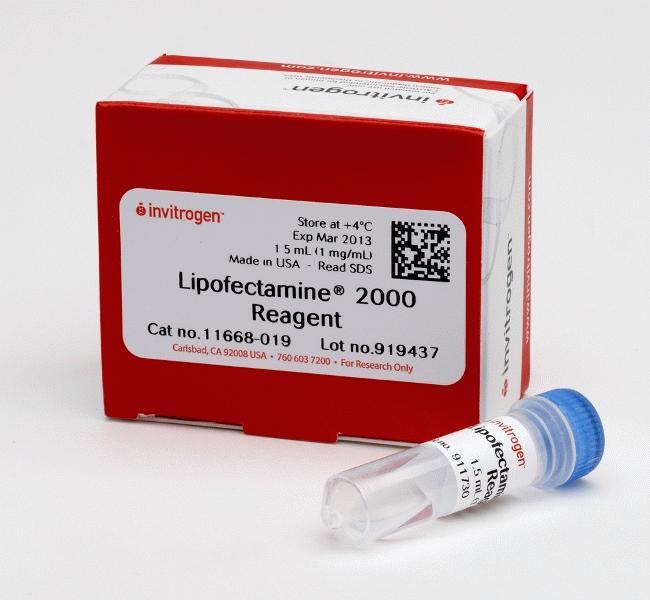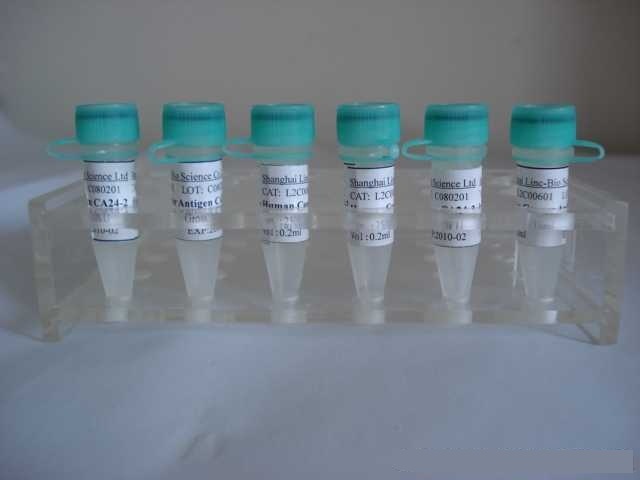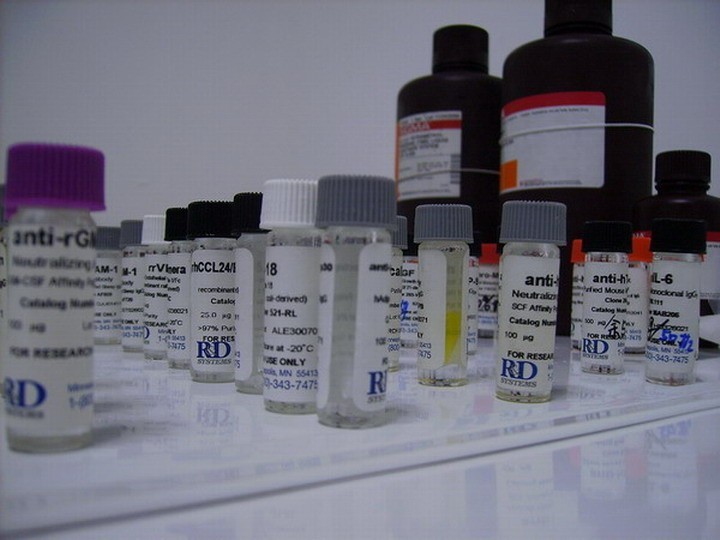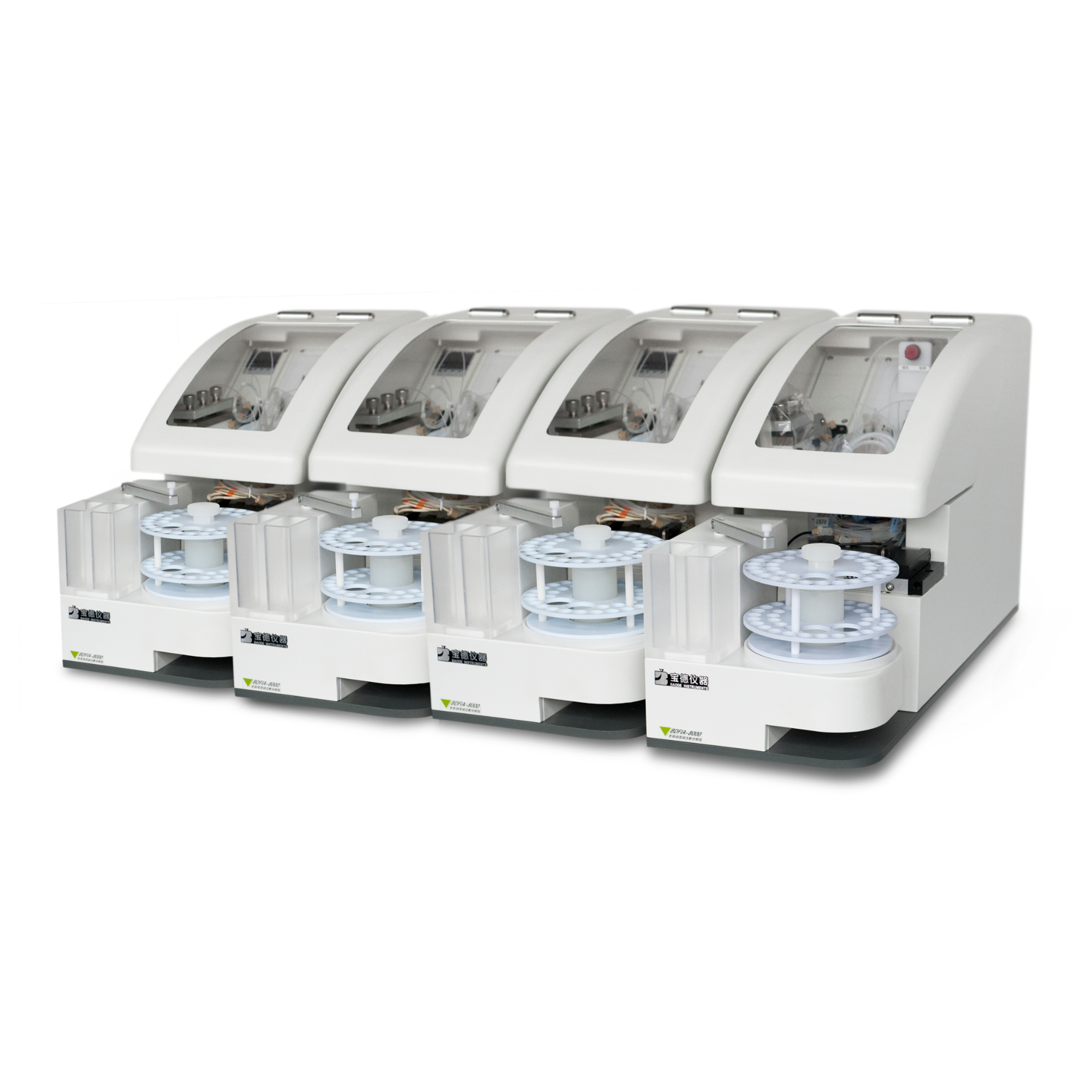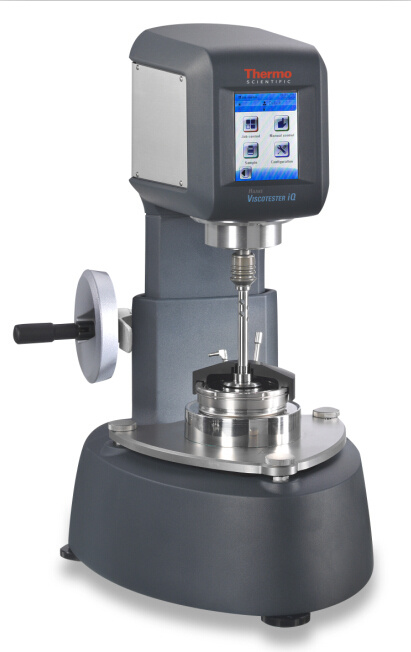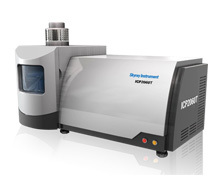GATA结合蛋白6抗体英文名称 Anti-GATA6
中文名称 GATA结合蛋白6抗体
别 名 Gata binding factor 6; Gata binding protein 6; GATA-binding factor 6; Gata6; GATA6_HUMAN; Transcription factor Gata 6; Transcription factor GATA-6.
浓 度 1mg/1ml
规 格 0.1ml/100μg 0.2ml/200μg
纯化的抗体可通过不同的途径获取,有些GATA结合蛋白6抗体可通过下述方法制备或从商家购买。从商家购买的抗体,通常附有正确的储存方法。
1)工作液应在4℃下融化并存放,可能稳定达数月。
2)如果没有特殊原因而避免使用叠氮钠,亦可加入叠氮钠,浓度为0.02%。将纯化的抗体样本分装成合适的体积,于-20℃保存。
3)纯化的抗体溶液应以较高的浓度(如lmg/m1)在中性pH下保存。:常用的抗体储存浓度高达l0mg/ml。较低浓度的抗体冻存前应浓缩。所有标准的浓缩方法(如超滤法),皆可使用。还有一个简单的方法是用蛋白A或蛋白G亲和柱来浓缩溶液。如果纯化的抗体不是用于标记,可将它们以较低浓度储存于加有1%BSA的溶液中。
4)经纯化制备的抗体在常用的缓冲液中是稳定的。其DH应保持在中性左右。如果pH在7-8之间,即使保存多年,对抗体也无损害。多数情况下,盐浓度适于保持在0-150mmol/L之间,但在长期存放的抗体中,盐溶液浓度高达500mmol/L时,对GATA结合蛋白6抗体能有损害。如果没有其他说明.律议用PBS或50mmol/LTris(DH8.0)溶液长期存放抗体。
抗体来源 Rabbit
克隆类型 polyclonal
交叉反应 Human, Mouse, Rat, Chicken, Dog, Pig, Cow, Rabbit, Sheep
产品类型 一抗
研究领域 肿瘤 心血管 细胞生物 免疫学 发育生物学 染色质和核信号 干细胞 转录调节因子 结合蛋白 表观遗传学
蛋白分子量 predicted molecular weight: 60kDa
性 状 Lyophilized or Liquid
免 疫 原 KLH conjugated synthetic peptide derived from human GATA-6
亚 型 IgG
纯化方法 affinity purified by Protein A
储 存 液 0.01M PBS, pH 7.4 with 10 mg/ml BSA and 0.1% Sodium azide
产品应用 WB=1:100-500 ELISA=1:500-1000 IP=1:20-100 IHC-P=1:100-500 IHC-F=1:100-500 ICC=1:100-500 IF=1:100-500
(石蜡切片需做抗原修复)
not yet tested in other applications.
optimal dilutions/concentrations should be determined by the end user.
保存条件 Store at -20 °C for one year. Avoid repeated freeze/thaw cycles. The lyophilized antibody is stable at room temperature for at least one month and for greater than a year when kept at -20°C. When reconstituted in sterile pH 7.4 0.01M PBS or diluent of antibody the antibody is stable for at least two weeks at 2-4 °C.
Important Note This product as supplied is intended for research use only, not for use in human, therapeutic or diagnostic applications.
GATA结合蛋白6抗体产品介绍 This gene is a member of a small family of zinc finger transcription factors that play an important role in the regulation of cellular differentiation and organogenesis during vertebrate development. This gene is expressed during early embryogenesis and localizes to endo- and mesodermally derived cells during later embryogenesis and thereby plays an important role in gut, lung, and heart development. Mutations in this gene are associated with several congenital defects. [provided by RefSeq, Mar 2012].
Function : Transcriptional activator that regulates SEMA3C and PLXNA2. Thought to be important for regulating terminal differentiation and/or proliferation.
Subunit : Interacts with LMCD1 (By similarity).
Subcellular Location : Nucleus.
Tissue Specificity : Expressed in heart, gut and gut-derived tissues.
DISEASE : Defects in GATA6 are a cause of conotruncal heart malformations (CTHM) [MIM:217095]. A group of congenital heart defects involving the outflow tracts. Examples include truncus arteriosus communis, double-outlet right ventricle and transposition of great arteries. Truncus arteriosus communis is characterized by a single outflow tract instead of a separate aorta and pulmonary artery. In transposition of the great arteries, the aorta arises from the right ventricle and the pulmonary artery from the left ventricle. In double outlet of the right ventricle, both the pulmonary artery and aorta arise from the right ventricle. Note=GATA6 mutations have been found in patients with non-syndromic persistent truncus arteriosus (PubMed:19666519).
Defects in GATA6 are the cause of atrial septal defect type 9 (ASD9) [MIM:614475]. A congenital heart malformation characterized by incomplete closure of the wall between the atria resulting in blood flow from the left to the right atria. Some patients manifest tricuspid valve disease, pulmonary valve disease, and pulmonary artery hypertension.
Defects in GATA6 are a cause of tetralogy of Fallot (TOF) [MIM:187500]. A congenital heart anomaly which consists of pulmonary stenosis, ventricular septal defect, dextroposition of the aorta (aorta is on the right side instead of the left) and hypertrophy of the right ventricle. In this condition, blood from both ventricles (oxygen-rich and oxygen-poor) is pumped into the body often causing cyanosis.
Defects in GATA6 are the cause of atrioventricular septal defect type 5 (AVSD5) [MIM:614474]. A congenital heart malformation characterized by a common atrioventricular junction coexisting with deficient atrioventricular septation. The complete form involves underdevelopment of the lower part of the atrial septum and the upper part of the ventricular septum; the valve itself is also shared. A less severe form, known as ostium primum atrial septal defect, is characterized by separate atrioventricular valvar orifices despite a common junction.
Defects in GATA6 are a cause of pancreatic agenesis and congenital heart defects (PACHD) [MIM:600001]. An autosomal dominant disease characterized by pancreatic severe hypoplasia or agenesis, diabetes mellitus, and congenital heart abonormalities including ventricular septal defect, patent ductus arteriosus, pulmonary artery stenosis, truncus arteriosus and tetralogy of Fallot.
Similarity : Contains 2 GATA-type zinc fingers.
Database links : UniProtKB/Swiss-Prot: Q92908.2
GATA6又称转录调节因子GATA6,可能抑制Wnt路径,方式是通过直接调控Wnt路径中另一种名为Fzd2的蛋白的表达。而Wnt路径是干细胞生物学中一个主要的路径。GATA6负调控Wnt路径并且其已被证明在胚胎干细胞复制和分化中也起重要作用。
![]()



